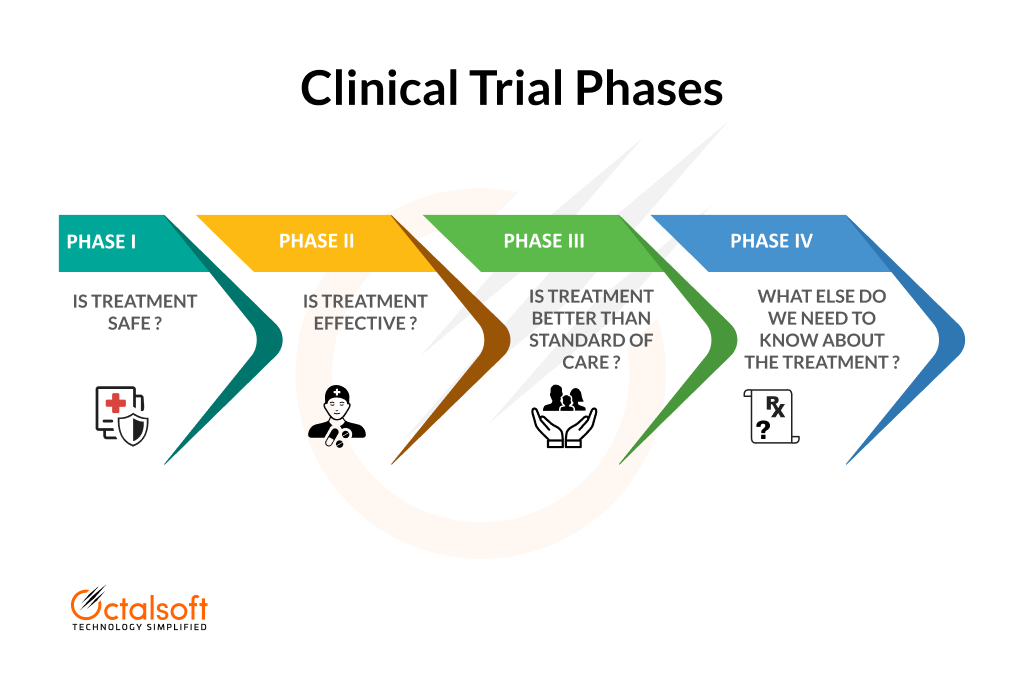The shift to more decentralized trials in response to COVID-19 pandemic constraints has shown that the clinical trial industry is capable of embracing new technologies and adapting them for use in study operations. The industry has been and continues to be resistant to change, including the adoption of new technology, even when such technologies provide demonstrable time or cost savings.In this blog we discuss the three barriers stonewalling clinical trial innovation.
Although the global acceptance of new technology and innovation has increased dramatically over the last decade, organizations that are slow to adopt new technology and new ways of doing things are increasingly widespread in the clinical research business. According to a recent study conducted by the Tufts Centre for the Study of Drug Development (CSDD), clinical trial advances take roughly six years to be adopted. Planning and launching an invention can take roughly 14 months, followed by a 16-month appraisal of feasibility and effect. Another 16 months may be spent considering whether to pursue an idea, which can then take 23 months to execute.
"The timeframe to go through each stage of the process varies by company size, but overall, respondents report the later stages of the process—deciding to adopt the change and implementing it—are the most difficult," according to the research.
According to the CSDD survey results, while 67.8% of respondents assessed their firms' ability to adapt innovations as "excellent" or "good," 60% reported that their companies are slower to implement those technologies than similar organizations.
Many other occupations show a considerably better level of flexibility and openness to accept new technology and methods of accomplishing tasks. For example, during the pandemic, schools from primary to college levels had to fast transition to remote learning, and most did so successfully.
During the pandemic, the clinical research sector has also shown its ability to respond quickly and adapt to unique situations. With COVID pushing attempts to socially remove and prevent individuals from gathering inside, research sites, sponsors, and CROs swiftly embraced the use of different technologies—telehealth, passive data collection via wearables, remote health visits, and more—to enable a decentralized approach to clinical trials. The tactics used to address the requirement to keep patients out of research facilities during the pandemic have been effectively adapted to provide patients greater control over how they experience clinical research.
But where does this opposition originate from, and what is its impact? Three profoundly rooted institutional impediments seem to be at work
1. Regulatory uncertainty worries researchers
The first of the three barriers stem from regulatory duties. The clinical research business is one of the most heavily regulated in the world, which is the source of the second major obstacle to change acceptability. Because of the numerous restrictions that clinical researchers must follow, there is a genuine concern that any adjustments, no matter how beneficial or well-intended, may cause issues with the FDA.
According to the CSDD poll, a lack of regulatory clarity is a key impediment to the adoption of innovations. Because present rules and regulations are ambiguous, research organizations' regulatory and legal departments may be cautious about accepting new technologies or methodologies.
Furthermore, the FDA and other worldwide regulators demonstrated equal flexibility in adopting newer technology and procedures to facilitate this transition; the FDA even produced advice on how these new approaches fit within the existing regulatory structure. This experience may eventually lead to a greater acceptance of technological advancements in clinical research.
This fear is rooted in the pervasive mindset of "if it ain't broke, don't fix it." Because of regulation and risk aversion, the sector as a whole is unwilling to undertake any changes that are not required. simply if a new technology or strategy may reduce the cost of a portion of an operation, any uncertainty or risk, or simply a lack of demonstrated efficacy, can deter a research site or other organization from even contemplating adopting new technologies or making other changes.
And this can be rather short-sighted. For example, noncompliance with the procedure is consistently the most prevalent finding during FDA inspections. Whether or not a protocol violation is detected during an inspection, it can still result in delays and additional expenses, such as those involved with retraining errant employees—and occasionally all employees.
This is a well-known issue that happens rather frequently. In a document released in April of this year, for example, CSDD presented the findings of a working group research, which revealed that Phase II and III protocols contain an average total of 75 and 119 protocol variations, respectively. These estimates might include approximately a third of all participants participating in a research trial.
Furthermore, they should notify research sites, sponsors, and CROs that something is wrong with the present system, which is most likely related to how research workers get protocol training. That alone is a significant indication that the industry must do something new than what has previously been done.
For example, when it comes to enhancing researchers' protocol compliance performance, training is an obvious place to start. Decades of giving enormous slide decks and lecture-based training have not resulted in increased procedure compliance. Simulation-based training, which has proved to be more successful in teaching practical skills in the medical, airline, and other sectors, has lately gained interest in clinical research.
2. Research staff burdens concern sites
A second major impediment to technology and innovation adoption is rising concern about the workloads put on research professionals. Many staff are struggling under present workloads; with trials witnessing rising complexity and the advent of new methodologies such as decentralized and hybrid trials, many research roles are having responsibilities added often.
Technology burnout, in particular, is a frequent issue among research sites, CROs, and sponsors. Many people believe there is an oversupply of technology, which leads to tech burnout. This has made sites and advertisers hesitant to add another login and password on employees' plates. Returning to the training example, delivering a slide deck or a link to a webinar by email reduces the number of systems that sites must enter into and appears to lessen staff stress.
However, if handled correctly, a modification in this area might eventually lessen the site personnel strain. In the domain of training, for example, alterations from the usual distribution of slide decks, with or without an accompanying lecture, may be viewed skeptically due to concerns that this would add additional time to already-long workdays, without accompanying money that would take the sting out of more labor.
Simulation-based training that generates real-time information about staff performance in realistic scenarios could allow employees to breeze through parts of the training in which they are already proficient while focusing more closely on areas specific to a given protocol where they may require more guidance. This might involve a procedure that differs from the standard of care or a novel method of acquiring data.
While it is crucial to assess the impact of any change on researchers' time, it is also critical to ensure that the technology or approach adopted benefits both individual employees and the clinical trial as a whole. Technology tools, such as simulation-based learning, are not gimmicks. They should be designed to aid the learning spectrum and increase staff performance by ensuring that all employees fully understand the protocol's needs.
3. Uncertain returns on investment hinder change
The third major impediment to necessary changes in the clinical research business is simply institutional confusion regarding the possible advantages and consequences of implementing new technology, methodologies, and training, among other things. The CSDD poll also identified return-on-investment evaluations as a hindrance to industrial innovation.
Changes must have a specified and quantifiable payoff while also being reasonably assured that they will not have negative repercussions. Changes in one area of clinical research can have a wide-ranging influence. This implies that modifications can be costly in terms of both investment and possible loss.
This relates to the worry of anything going wrong, such as a regulatory or legal ramification, or an increase in cost or time necessary. If something has been done in the same manner and there have been no severe difficulties—for example, no regulatory ramifications, no patients have been hurt, and no one has been fired—organizations may be hesitant to risk problems by experimenting with a new technology or technique.
The complicated interplay between research sites, sponsors, CROs, and often several regulatory agencies, as well as IRBs, means there are a lot of moving components to consider. In other circumstances, the issue of doing an adequate risk-benefit analysis may be regarded as excessively time-consuming and costly, not to mention a drain on human resources. In such circumstances, the possibility of a change triggering regulatory issues—despite recent FDA indications of flexibility in new technology use—will frequently tilt the scales in favour of the status quo.
Change management is an important topic for researchers; many sites lack efficient, well-established methods for reviewing and implementing changes. However, in addition to allowing for increased time and cost efficiency, more patient-centered approaches to research, and fewer protocol deviations, the effort to incorporate appropriate new technology or operational procedures may result in enhanced change management processes. As a result, organizations would be able to implement new technologies in the future with more safety and simplicity.
In Summation
In a word, it is easier and less frightening to continue doing things the same way. However, many emerging technologies may be integrated into the clinical trial process in a way that gives back more than it takes. Switching to simulation-based training instead of slide decks, for example, might eventually cut training time while solving a long-standing weakness—protocol compliance.
Change may improve a variety of circumstances, and when new technologies or ideas offer evident benefits, they should be evaluated. From seamless data migration and comprehensive user training to customization options, data security, collaboration tools, scalability, and future-proofing, Octalsoft's eClinical suite ensures a smooth and successful transition. By choosing Octalsoft, organizations can mitigate concerns, streamline their clinical trial operations, and pave the way for improved outcomes and efficiency in their research endeavors.



